Intermediate -Level 2
FULL SUN
Full sun, benefits from afternoon protection
pH
6.0-7.0
FEEDING
Nitrogen, phosphorus, potassium, iron
PLANTING
Fall through spring, October to April
Malus Pumila- Apples belong to the Rosaceae family and are related to blackberries, roses, hawthorn, and almond, to name a few. They are deciduous trees that should drop their leaves in winter and put out new growth in spring. Apple trees are not typically grown from seed, but rather from grafted rootstock. This is because apple trees will not grow true to seed, in other words, if planting a pink lady seed from the store, the tree that grows will not necessarily be a pink lady. Apples cross-pollinate with other varieties.
The most controversial information about growing apples in areas with mild winters is that only low chill hour varieties can be grown.
However, according to Tom Spellman of Dave Wilson Nurseries, trials have proven that high chill apples will grow and produce fine in low chill areas.
Gardeners with small yards, can look into grafting several varieties of apples onto one tree, often referred to as a cocktail tree. Some apple trees are self-pollinating but most will produce much better with a different variety to pollinate the flowers. As different varieties bloom at slightly different times, it is important to make sure the pollinating apple tree is compatible as a pollinating variety.
VARIETIES
When choosing varieties, keep in mind when they are ready for harvest. The intense desert heat can be harmful to the fruit, so varieties that ripen in early summer(June) are the safest choice. However, late-ripening varieties will do fine in an area that receives afternoon sun in the summer or has been protected with dappled shade.
- Ein Shemer: June- July ripening. 350 chill hours. Pollinated by Anna and Dorset. Sweet, semi acidic, and good for fresh eating.
- Dorsett Gold: June- July ripening. Low chill variety. Pollinated by Anna and Ein Shemer. Great for cooking and baking.
- Anna June: July ripening. Low chill variety. Anna and Dorsett Gold are the most popular apples to grow in Phoenix and other desert regions. Opinions vary as to whether this makes a good eating apple, as it is not a crisp variety. Excellent for apple butter and apple sauce.
- Pink Lady/Cripps Pink: Late ripening, 500 chill hours. Use for fresh eating, pies, cakes, tarts. Self-fertile.
- Ghost apple: Late ripening. 500 chill hours. Very crisp, very tasty. Fresh Eating. Pollinated by fuji, Pink Lady, or Granny Smith.
- Golden Delicious Late Ripening. Low chill. A crisp apple that can be used fresh or in pies, sauces, canning, and cider.Self fertile.
- Pettingill: Late Ripening. Low chill. Crisp and Juicy with good acid- sweet balance. Great for pies, stores well in cold storage. Self-fertile
- Tropic Sweet: June-July Ripening. Low Chill. Sweet crunchy texture. Pollinated by Dorset or Anna.
- Beverly Hills: Late ripening. 300 chill hours. Produces a pale yellow medium-sized fruit. Self-fertile.
- Other varieties to try are King Thompkins, Braeburn, Scarlett Centennial, Gravenstein, Cox Orange Pippin, Ashmead’s Kernal, Honey Crisp.
Root Stock
Most apple trees available to desert climates will be on MM1-11. This is considered a semi- vigorous rootstock and will produce a tree approximately 10-16ft tall. Apple trees purchased in Phoenix and California will probably be a Dave Wilson Nursery tree and will most likely be on MM1-11 rootstock. It is a very adaptable rootstock that tolerates a variety of soil, including clay. If purchasing from other growers, M-7, a dwarfing rootstock is also common.
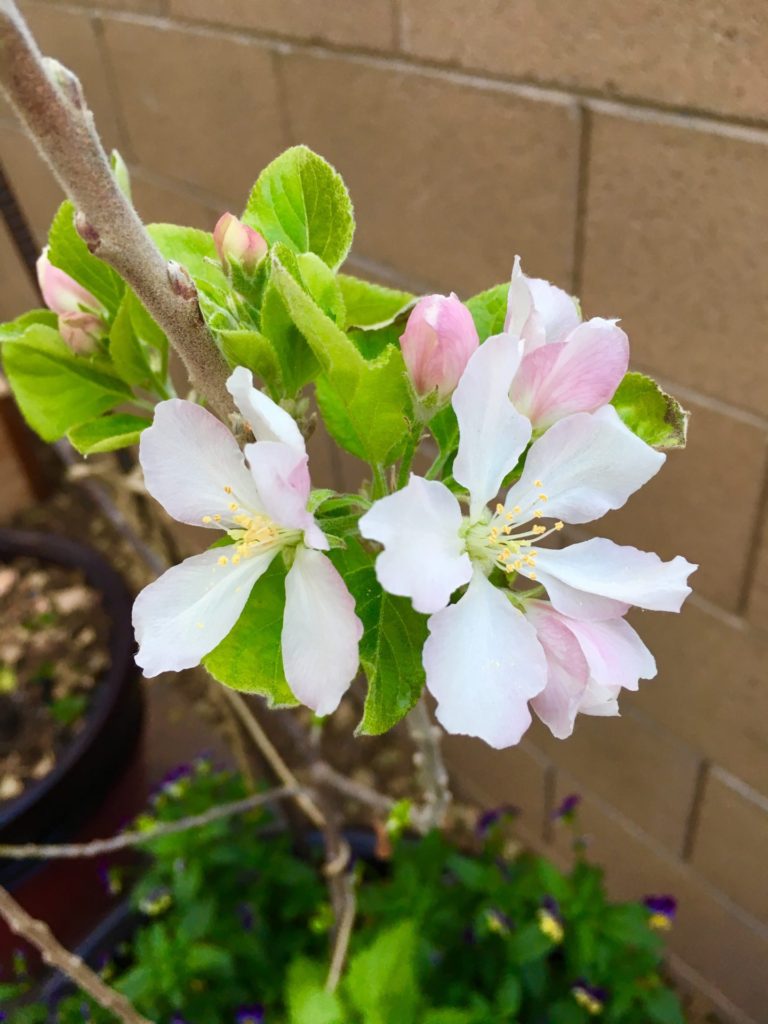
HOW TO PLANT
- Potted apple trees can be planted in fall through winter(Oct- Jan) and also in Spring from January until April. Bare root trees are available from January to February.
- Plant apple trees in the part of your garden that is coldest in winter. Winter freezes and frosts are great for the tree.
- Before placing it in the hole, find the graft on the tree and face the graft East to protect it from the harsh West Sun.
- Do not mound soil up to the trunk. The root ball should sit just barely exposed in relation to the soil line.
- Once the planting hole has been backfilled, add in companion plants and mulch, or add 3 -4 inches of a mulch layer to protect the soil and conserve water.
- Water well, and keep the tree moist without drowning the roots. The detailed article on how to plant a tree, as referenced above specifies how to water newly planted trees. Once established water to 3 ft deep.
- If you are planting a bare root tree, prune off the top third of the tree. This may seem harsh but this helps the tree’s energy to go into producing a strong root system rather than maintaining the top growth.
- All tree trunks are very susceptible to sunburn in our Phoenix desert climate. The trunk will need to be protected, we recommend IV Organics 3-in-1 Plant Guard. Use the code DESERT10 for 10% off purchases.
- Young apple trees will need to be protected from the harsh summer sun with shade cloth for at least the first summer, while they get established. Thereafter, they will be able to handle full sun but need sufficient watering and there is a chance that there will still be some sunburn on leaves.
- Apple trees will benefit from being planted in an area that is protected from the harsh summer afternoon sun, especially high chill varieties.This is mostly to protect the developing fruit of these varieties since they may ripen later.
- In warm climates, low chill varieties tend to hold onto their leaves, rather than going completely dormant in winter. Manually remove remaining leaves in January. High chill varieties will defoliate and go into complete dormancy. Prune in late winter approximately January. Pruning tips .
- Once the fruit has set, the fruit will need to thinned. Trees will self thin after the initial fruit set, but once the apples start to get to about the size of a quarter, it is time for manual thinning as needed. Thinning results in larger fruit, but it also helps prevent branches from breaking under the weight of the fruit. Each fruiting spur will produce 2-6 apples. Fruit should be thinned to one apple per every 6 inches of branch.
- Container Gardeners: Plant in the largest pot you can, at least 30 gallons. Maintain the soil pH with soil sulphur and try to get a tree on M-7 root stock which is a dwarfing variety. MM1-11 will work but is happier in the ground.
- Apply sulfur 3 times a year to both in-ground and container-grown trees to lower the pH for healthier trees.
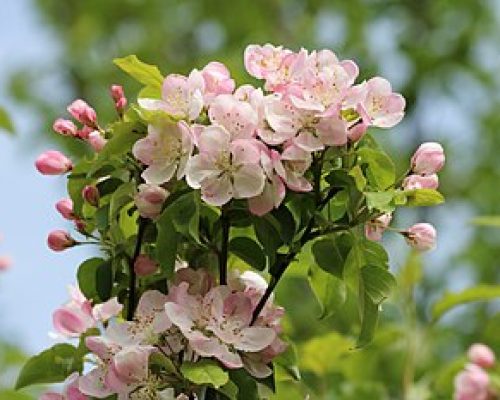
FEEDING AND FERTILIZING
Feed once a month with an organic fertilizer such as Earth’s Original Organics.
In fall and spring, apple trees should receive a fertilizer high in phosphorus such as the Magic Bloom. The tree will take up the phosphorus to support healthy and abundant spring blooms.
Maintain the soil pH with the addition of soil sulphur every 3 months.
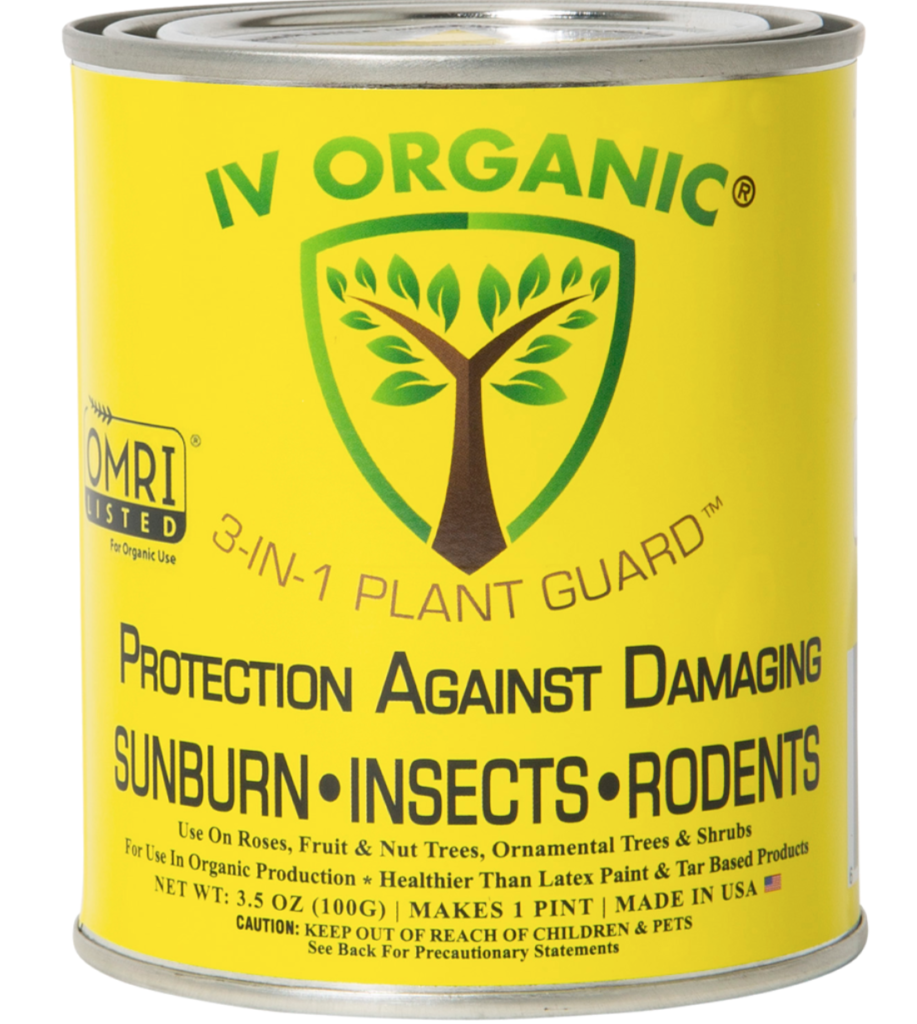
WINTER/SUMMER CARE
Apples require no additional care in winter. Cut back on watering. IV Organics 3-1 Plant Guard will protect against winter sunscald on tree trunks.
In summer protect from harsh temperatures in the afternoon, water correctly and monitor chlorosis and sunburn. All plants including apple trees will benefit from the addition of liquid seaweed and humic acid to cope with summer stress.
POSSIBLE ISSUES
Sunburn
This is to be expected in the extreme sun. As long as the trunk is not getting sunburnt and most of the tree looks healthy, this will not be a problem. IV Organics 3-1 plant guard can also be sprayed on the leaves to protect from sunburn.
Aphids
Like many gardening plants, apple trees can be plagued with aphids and other soft-bodied insects. Monitor aphids and remove infected areas by hand, or encourage beneficial insects such as lacewings, ladybugs, and assassin bugs.
Fire Blight
This is an issue during bloom time especially in California and other parts of the USA during heavy rains, dews, or moisture. It is not common in Phoenix since we do not have much moisture in the air. The bacteria overwinter in cankers in the living tissue of the trunk and branches. During the bloom season, the bacteria is spread by splashing water and rain, pollinating insects, and pruning. Infected twigs and shoots have a reddish-brown streaking.
Canker
The canker is a wound on the apple tree that could become infected with the fungus Neonectria ditissima (syn. Neonectria galligena, Nectria galligena). It appears as round or oval areas of dead sunken bark. It is more prevalent when soils are very wet or acidic. To prevent canker, have well-draining soil and maintain a suitable pH balance. If canker is an issue, cut out any infected areas, being careful not to infect other trees or other parts of the tree. Cut back to the fresh green plant tissue. Seal the cut with Iv Organics Tree paint. Clean tools with rubbing alcohol between cuts and after use of the tools.
Chlorosis
During the summer months many fruit trees, including apples may look chlorotic because they cannot take up minerals from the soil. This is caused by the heat and alkalinity of the soil. Add chelated iron to correct.
Rogue Bloom
This is the apple tree blooming out of season, often Aug-Oct. These blooms should be picked off. While the blooming itself is not a problem, if a tree is infected with fire blight, bees could carry the disease to a healthy tree and spread the blight.
Birds
Birds commonly attempt to eat ripening fruit. Use fabric tie string bags or organza bags to protect fruit. Green colored bags are also useful as they trick birds into believe the bag does not contain ripe fruit. Birds are surprisingly crafty and are able to remove bags even when tied on if they are motivated enough.
Galling
Galls are the result of bacteria entering the plant tissue through the root system. This happens when there is damage to the root system and the bacteria is present. The bacteria inserts its DNA into the tree causing galls on roots, trucks, and at graft unions.THe grow in size over time and affect the growth and health of a tree. The best control is prevention. For a lightly infected tree, the galled tissue is cut out/ removed and sealed or treated with a product such as Monterey Complete Disease Control. Infected trees are best dug up if very heavily infected. Do not compost any material from a gall infected tree.
Rust
Occasionally rust could be an issue on apple trees. It is identified as orange spots infecting leaves. It is a fungal infection and is treated by neem organically or a sulfur spray or fungicide. Woody galls may also be present on the tree as this is how the plant becomes infected. The galls host the fungus spores initially. While rust, canker and galling are not very common here, gall and canker infected trees do end up up in removal.
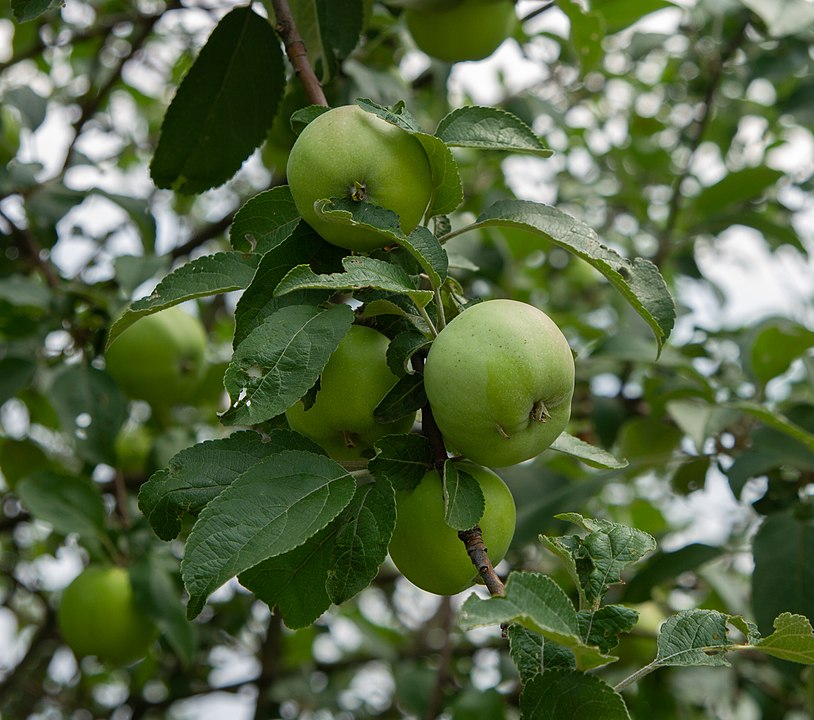
HARVESTING
Apples on the outside of the tree will ripen before the ones on the interior. Depending on the variety, ripening times will differ. Ripe apples will have dark brown to black seeds on the interior.
Ripe apples will come off a tree easily they don’t need to be tugged or pulled. Hold the bottom of the apple, lift it against the stem, and twist. If it doesn’t come off easily, it’s not ripe.
Ripe apples will also taste delicious and ripe. They will not be tannic.
The unripe apple thinnings can be pickled.
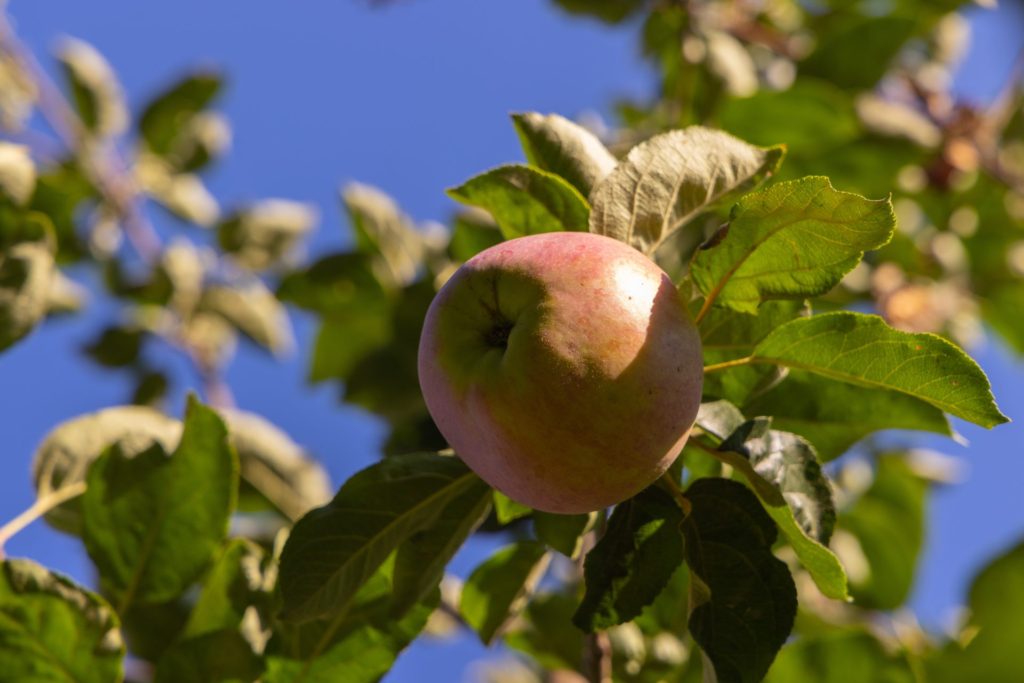
COMPANION PLANTING
There is no shortage of companions plants for apple trees. Climbing roses are very attractive grown against an apple tree.
Many flowers such as marigolds, nasturtium, and chamomile are also good companions.
All allium family plants such as garlic, chives, onions can be planted as companions
Any herbs will make a good companion and bulbs such as daffodils, Muscari, saffron, are also a good choice.
In a permaculture tree guild, comfrey, yarrow, bee balm, clover, and dandelion could be used.
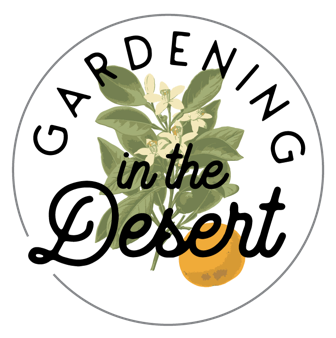
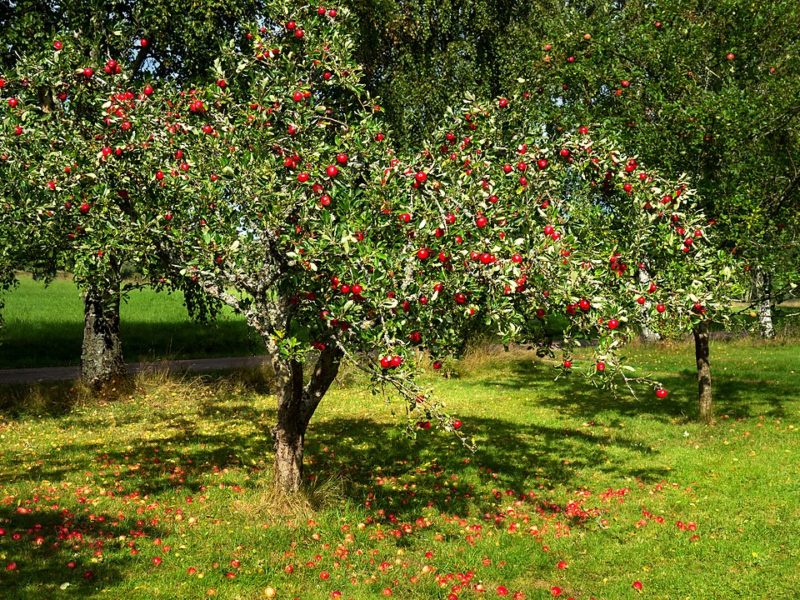
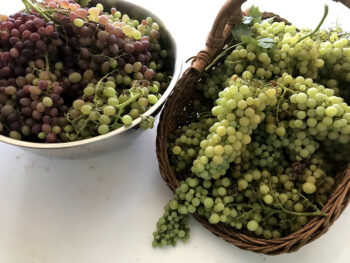
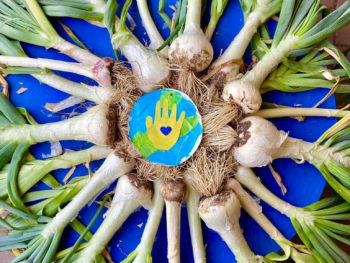
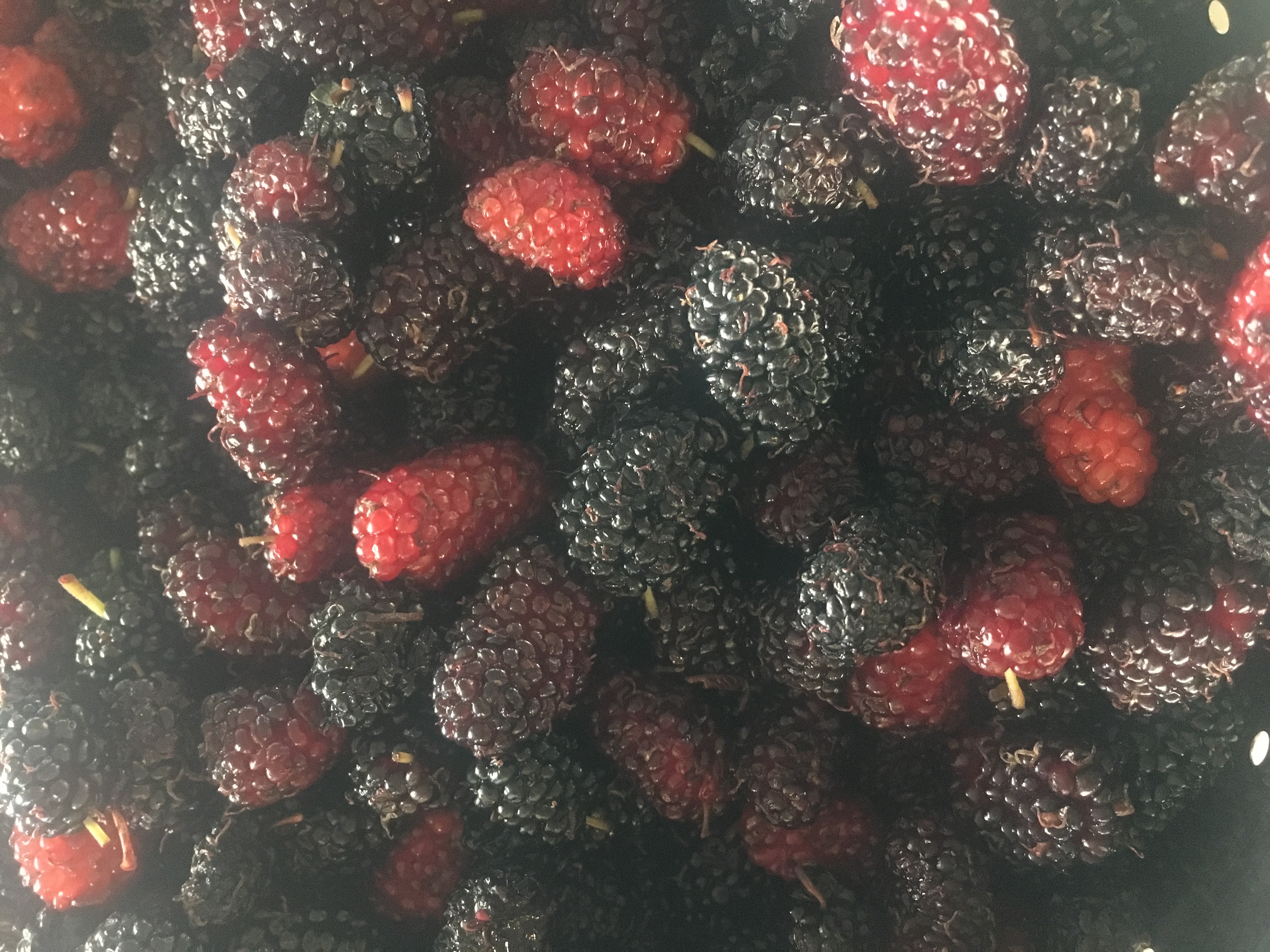
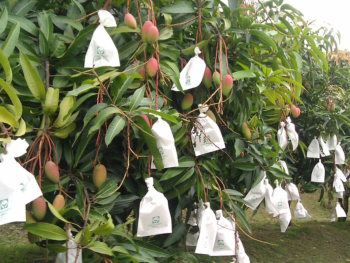
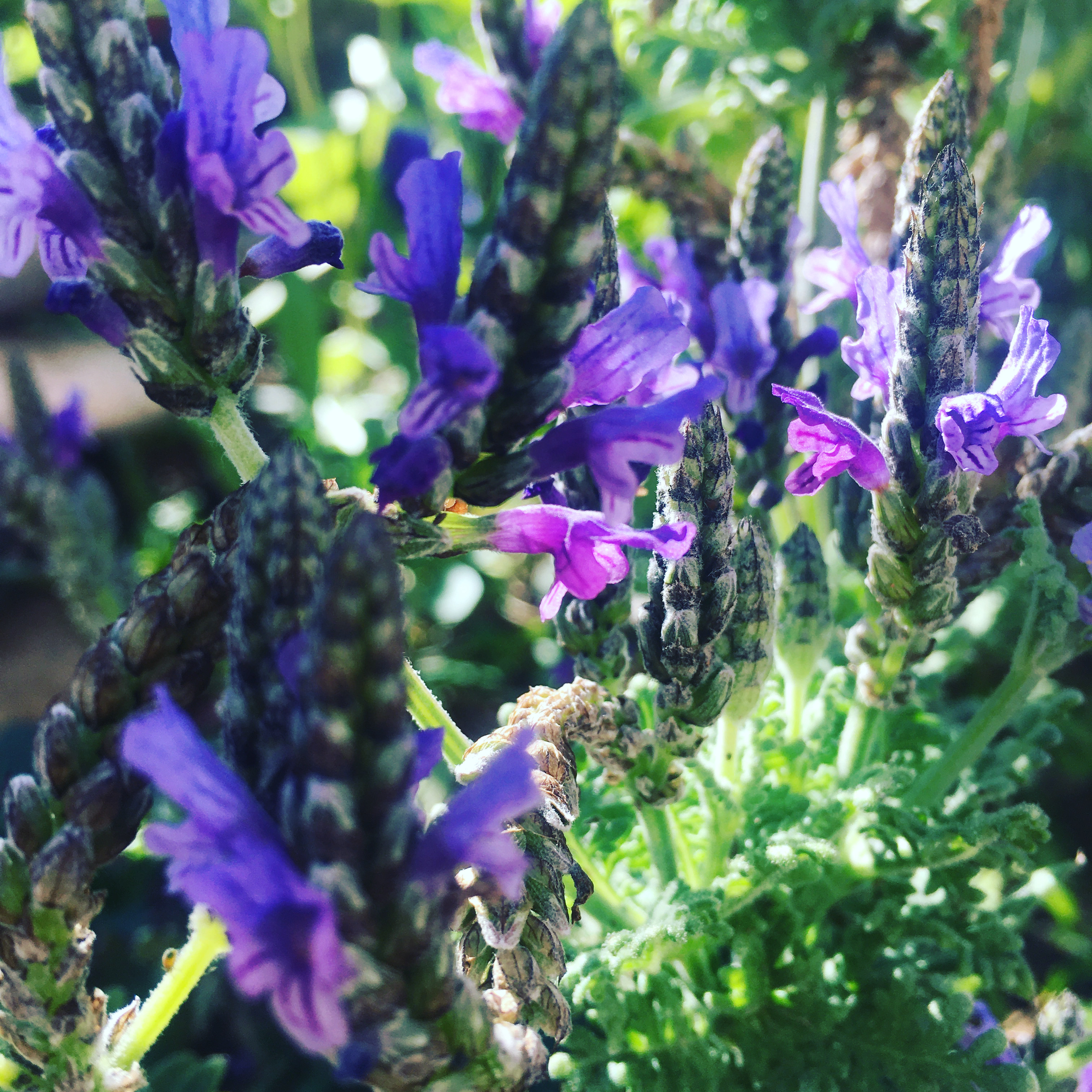
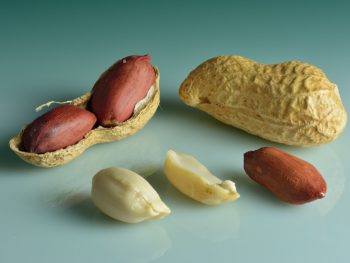
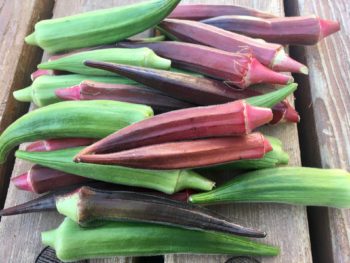
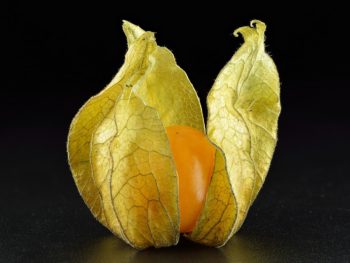
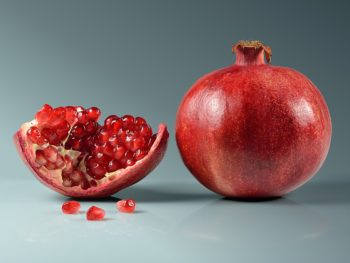
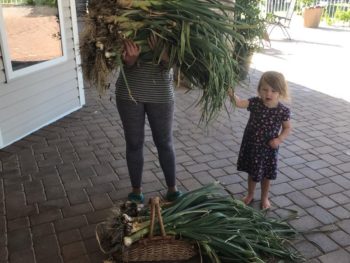
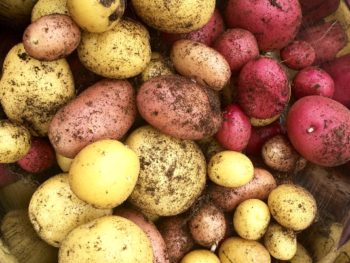
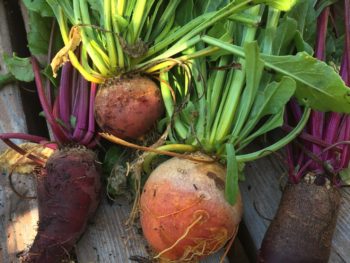
 6 Tips For Container Gardening In The Desert
6 Tips For Container Gardening In The Desert